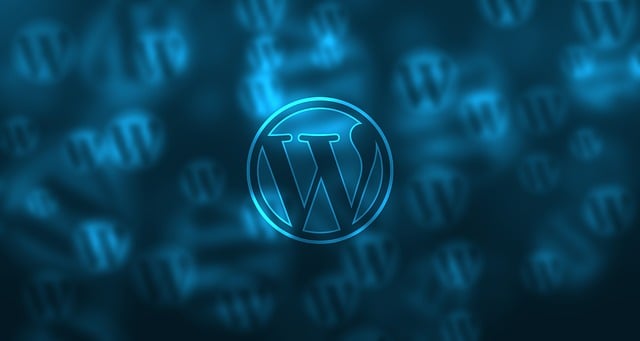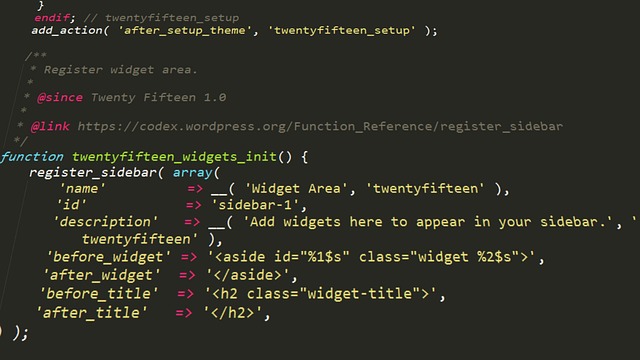Before redesigning a WordPress website, conduct a performance audit using tools like Google Analytics to identify strengths, weaknesses, and optimization opportunities. Define clear objectives (e.g., boosting conversions, enhancing user experience) and tailor the design to target audience needs. WordPress themes offer flexibility for brand integration, and responsive design ensures adaptability across devices. Integrate essential plugins for functionality and SEO optimization while using best practices like keyword usage and structured data markup for improved rankings. Thorough testing and ongoing maintenance after redesign are crucial for a stable, secure, and engaging site.
Looking to revamp your WordPress website? This comprehensive guide takes you through every step of a successful redesign. From assessing your current site’s performance (Understanding Your Website’s Current State) to optimizing for search engines (Optimizing for Search Engine Visibility and Performance), we cover it all. Discover how to choose the perfect WordPress themes, enhance user experience with responsive design, integrate essential features, and implement effective testing strategies. Elevate your online presence with a redesigned WordPress website that captivates and converts.
Understanding Your Website's Current State

Before jumping into a WordPress website redesign, it’s crucial to thoroughly understand your current site’s strengths and weaknesses. This involves evaluating its user experience, visual appeal, functionality, and performance. Tools like Google Analytics can provide insights into visitor behavior, helping you identify areas that need improvement or features that are driving engagement. A close examination of your existing WordPress design will reveal opportunities for optimization and innovation, ensuring the new design meets both your business objectives and user expectations.
By assessing the current state of your site, you can prioritize changes based on impact and feasibility. For example, if your website struggles with slow loading times, improving site speed should be a top priority. Similarly, if user navigation is confusing, reorganizing content and streamlining menus could significantly enhance the overall WordPress design. This reflective approach ensures that your redesign efforts are strategic, targeted, and aligned with your long-term goals.
Defining Your Redesign Goals and Target Audience

Redesigning a WordPress website is not just about changing aesthetics; it’s about achieving specific goals and connecting with your target audience. Before you begin, clearly define what you aim to accomplish. Are you looking to increase conversions, enhance user experience, or improve search engine optimization (SEO)? Understanding these objectives will guide your design choices. For instance, if your goal is better conversion rates, your redesign might focus on streamlining the checkout process and simplifying call-to-action buttons.
Knowing your target audience is equally crucial. Consider their demographics, preferences, and pain points. A website designed for young, tech-savvy users will differ significantly from one aimed at a more traditional, business-focused audience. Tailoring your WordPress design to resonate with your visitors ensures they find value in your site, encouraging them to explore further and engage with your content.
Exploring WordPress Themes and Customization Options

WordPress offers a vast array of themes, each with unique designs and functionalities, catering to diverse business needs. Exploring these themes is like navigating a vibrant tapestry where every thread represents a distinct style and feature. You can opt for pre-designed templates or delve into customization options, allowing your website to reflect your brand’s identity seamlessly. Customization ranges from choosing color schemes and fonts to rearranging layouts and adding custom code, ensuring your WordPress site stands out in the digital landscape.
The flexibility of WordPress design empowers business owners to create visually appealing and user-friendly websites without extensive coding knowledge. With a simple drag-and-drop interface for many themes, building a new site or redeeming an old one has never been easier. This approach democratizes web design, enabling folks from all walks of life to showcase their work, share ideas, or sell products online with professionalism and style.
Enhancing User Experience through Responsive Design

In today’s digital era, a seamless user experience (UX) is paramount for any website’s success. One of the most effective ways to achieve this is through responsive WordPress design. Responsive design ensures that your site adapts gracefully to different screen sizes and devices, whether it’s a desktop computer, tablet, or smartphone. This isn’t just about aesthetics; it significantly improves navigation, readability, and overall accessibility for all visitors.
By implementing responsive strategies, such as flexible layouts, media queries, and viewport optimization, WordPress designers can create dynamic websites that provide an intuitive and consistent experience across platforms. Such a design approach not only caters to the growing number of mobile users but also boosts search engine rankings, as Google prioritizes mobile-friendly sites in its results.
Integrating Essential Features and Plugins for Functionality

When redesigning a WordPress website, integrating essential features and plugins is paramount for enhancing functionality and user experience. Plugins are a powerful tool in the WordPress ecosystem, offering a wide range of capabilities from e-commerce solutions to advanced SEO optimization. Careful selection ensures that your site not only looks modern but also performs optimally.
Focus on incorporating tools tailored to your website’s unique needs. For instance, if enhancing visual appeal is key, consider plugins that improve image optimization and gallery display. Similarly, for sites heavily reliant on content creation, plugins facilitating regular updates and SEO-friendly writing can significantly boost online visibility. A balanced blend of these elements will contribute to a dynamic WordPress design that captivates visitors and drives engagement.
Optimizing for Search Engine Visibility and Performance

A well-redesigned WordPress website doesn’t just look appealing; it also optimizes for search engine visibility and performance, ensuring your site ranks higher on search results pages. Incorporating best practices in WordPress design, such as using relevant keywords strategically throughout content, enhancing meta tags, and implementing structured data markup, helps search engines understand your site’s purpose and context better. This, in turn, improves click-through rates and user engagement.
Furthermore, optimizing for speed and responsiveness is crucial. A fast-loading website not only enhances the user experience but also boosts SEO rankings. Utilize tools like Google PageSpeed Insights to identify areas for improvement, such as minimizing image sizes, leveraging browser caching, and enabling compression. A responsive design that adapts seamlessly across devices ensures your site appears authoritative and trustworthy in the eyes of both search algorithms and visitors alike.
Testing, Launching, and Post-Redesign Maintenance Strategies

After a meticulous WordPress website redesign, testing is paramount. This involves rigorous checks across various devices and browsers to ensure the new design renders consistently and all functionalities operate smoothly. A/B testing can also be employed to gather user feedback and make data-driven adjustments before the official launch. Once confident in the site’s stability and performance, launching can commence, ideally with a strategy that includes a soft rollout to a small audience first, allowing for early bug fixing and further optimization.
Post-launch, ongoing maintenance is crucial for any WordPress design. This encompasses regular updates to both the platform and plugins to maintain security and stability. A content strategy should be in place to keep the website fresh and engaging, with a focus on high-quality, optimized content that aligns with search engine best practices. Finally, monitoring tools should be utilized to track site performance, user behavior, and potential issues, enabling proactive measures to ensure the WordPress design remains effective and relevant over time.
